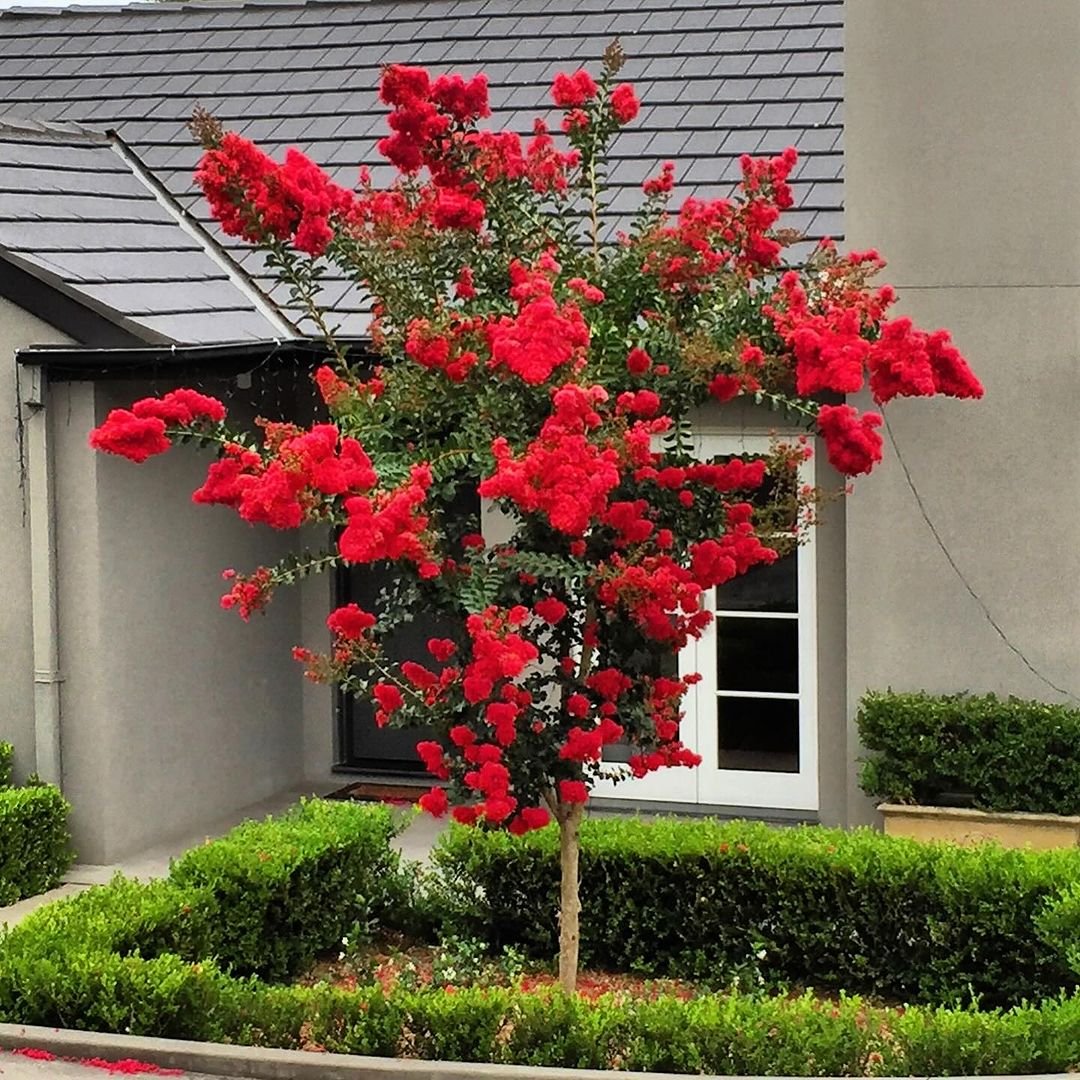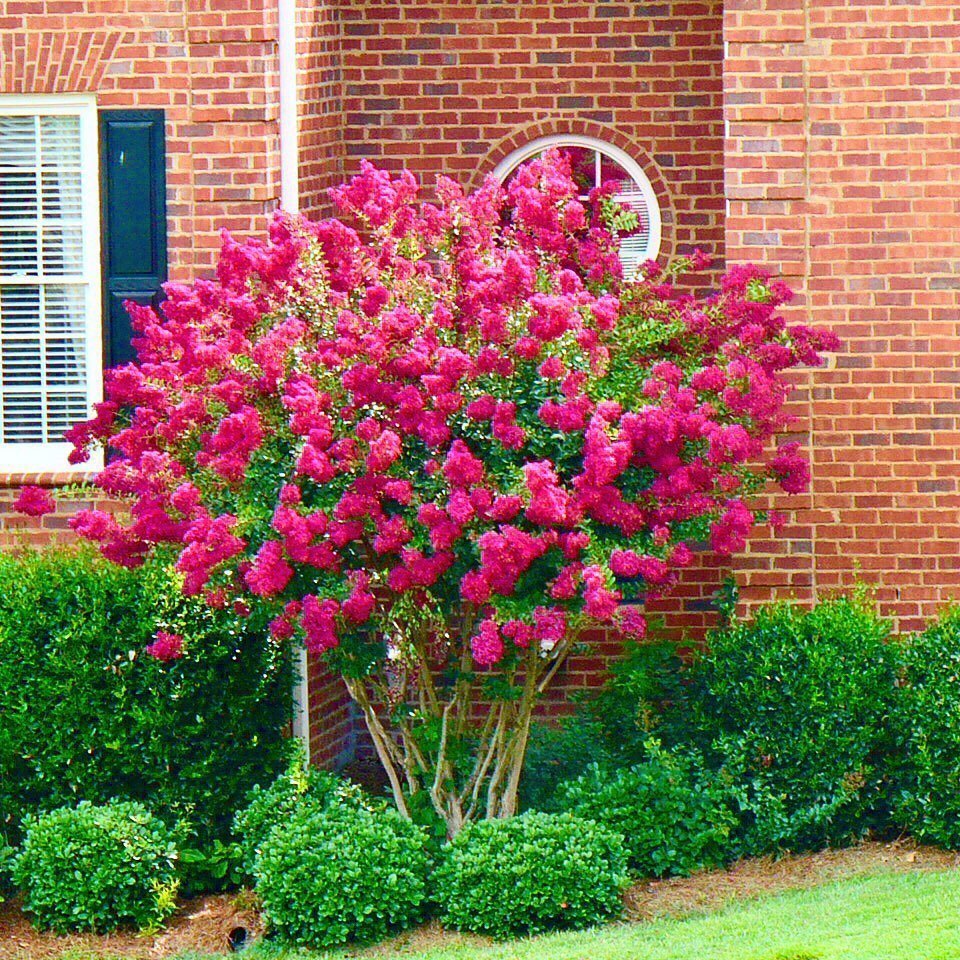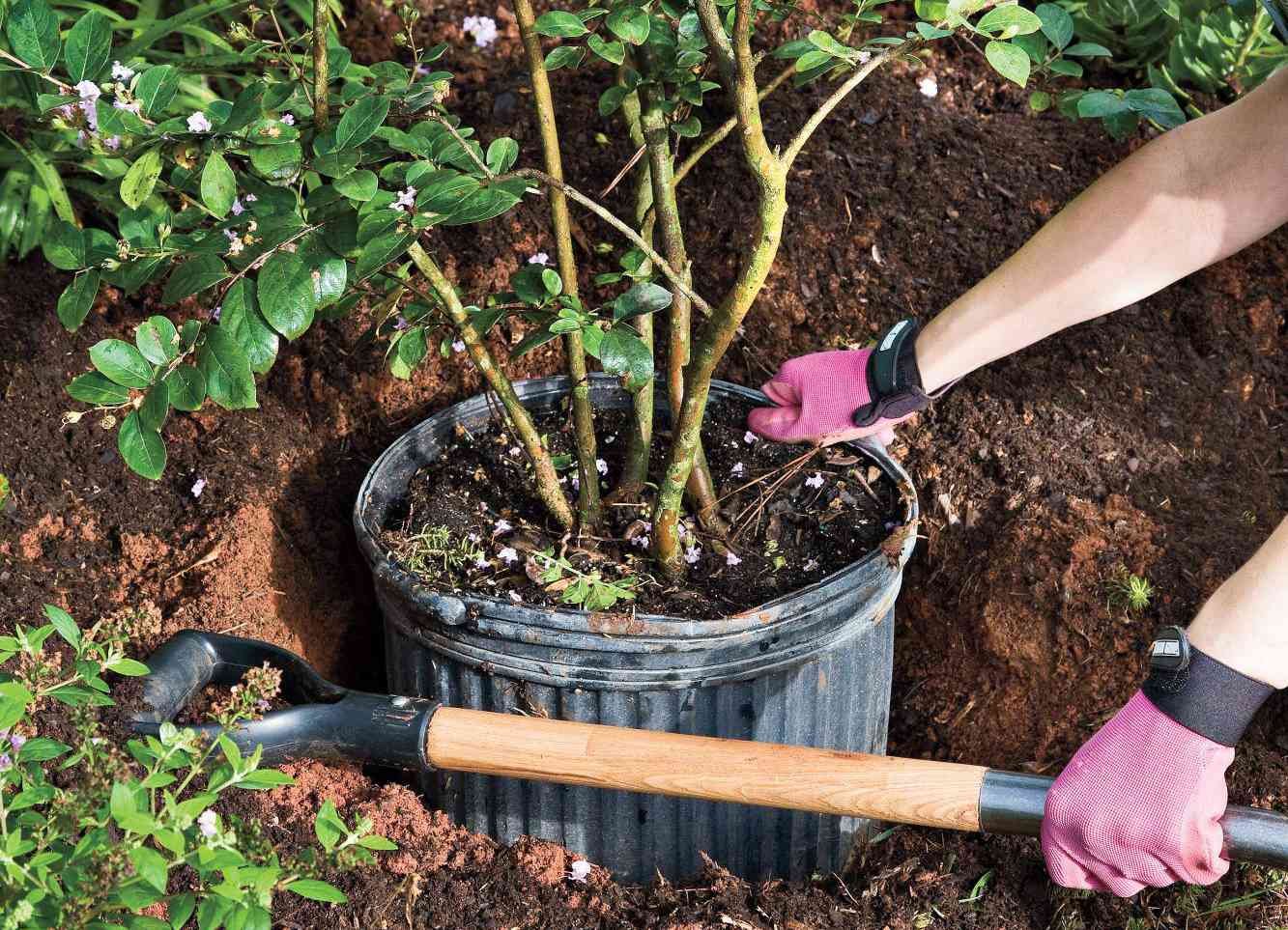Discover everything about beautiful, low-maintenance crepe myrtles! This guide covers selecting varieties, growing tips, landscape design ideas, and fun facts about these iconic southern flowering trees.
If you live in the southern or coastal regions of the United States, chances are you’ve noticed the beautiful blooming trees with clusters of crinkly flowers lining neighborhood streets during summer. Those stunning specimens are called crepe myrtles, and they’re incredibly popular landscape plants in warm climates.
With their showy flower clusters, drought tolerance, and variety of sizes from dwarf shrubs to towering trees, crepe myrtles make excellent ornamental plants for gardens and yards. Not only are they eye-catching when in bloom, but they also offer lovely fall foliage color and unique peeling bark in winter too.
In this guide, we’ll cover everything you need to know about growing crepe myrtles, from selecting the right variety to caring for these gorgeous flowering landscape trees. We’ll also explore some fun facts about these quintessential southern plants. Let’s dive in!
What Are Crepe Myrtles?

Crepe myrtles, botanically known as Lagerstroemia, are flowering trees and shrubs that are part of the loosestrife family. They’re native to parts of Asia like India, China, and Japan, but were introduced to the southern United States in the late 1700s.
Today, crepe myrtles are commonly found throughout the Southeast, Texas, California, and other warm, humid areas of the country where the climate mimics their subtropical Asian origins. In fact, they’re one of the most popular bloomers for landscaping in places like South Carolina, Georgia, and Florida.
These versatile plants come in an astonishingly wide range of sizes, from dwarf shrub varieties like ‘Pecos’ that max out at 2-3 feet tall, all the way up to large 30-foot flowering trees like the ‘Natchez’ cultivar. No matter the ultimate height, all crepe myrtles share a similar growth habit with multiple trunks, peeling tan bark, and glossy green leaves.
But crepe myrtles are most prized for their big, crinkly flower clusters that bloom throughout summer in shades like red, pink, purple, lavender, and bright white. The wrinkly blooms make quite the statement, inspiring the common name “crepe myrtle” which refers to the crinkly, crepe paper-like texture of the flower petals.
With their lavish warm-weather blooming and tolerance for heat and drought, it’s no wonder these hardy landscape trees have become iconic features across the American South.
Growing and Caring for Crepe Myrtles

One of the biggest perks of crepe myrtles is how low-maintenance and adaptable they are once established in the landscape. That said, they do have a few important needs for success. Follow these guidelines:
Site Selection The ideal planting spot should get at least 6 hours of full, direct sun per day and have well-draining soil with a fairly acidic pH in the 5.5-6.5 range. Avoid overly wet or heavy clay soil locations.
Size Considerations

Be sure to pick a crepe myrtle variety that fits your desired size expectations for the space, whether it’s a dwarf patio tree or towering shade specimen.
Planting

Plant in spring or early fall when temps are mild by digging a hole twice as wide as the root ball. For mature trees, also work root stimulator and fertilizer into the soil for best establishment.
Water Needs

Provide regular irrigation for the first 1-2 years until the root system is established. Once settled, crepe myrtles are very drought-tolerant and require little supplemental watering except during extreme dry spells.
Mulch

Apply a 2-3 inch layer of mulch or compost around the planting area to retain moisture, feed the soil and prevent weeds. Pull mulch a few inches back from the trunk to allow for proper airflow.
Sunlight

These sun-loving plants won’t flower or achieve their best fall color without at least 6-8 hours of direct sunlight per day. Place accordingly in your landscape.
Fertilizing

Only feed young crepe myrtles annually in early spring with a balanced fertilizer to encourage establishment. Otherwise, mature trees won’t need feeding if planted in quality soil.
Pruning

Thin out any rubbing or crossing branches in late winter while dormant. You can also remove the growing points of major trunks to encourage pleasing branching angles and fullness. But avoid severe pruning or “crepe murder” which looks unattractive.
With beautifully peeling bark, fantastic drought resistance once established, and minimal pest and disease issues, crepe myrtles are super low-maintenance landscape plants that just keep on giving! Those showy summer blooms are just the start.
Using Crepe Myrtles in the Landscape

Crepe myrtles make extremely versatile landscape plants that can be used for a variety of functions, including:
- Privacy screens or living fences
- Shade trees
- Accents and specimen plants
- Shrub borders and hedges (dwarf varieties)
- Foundation or porch plantings
- Boulevard or street trees
The variety of sizes from miniatures to large trees means there’s a crepe myrtle suited for just about any location and purpose. And with flower colors ranging from hot reds and pinks to cool whites and lavenders, you can find options to coordinate with any exterior color scheme too.
Many landscapers and designers will group multiple crepe myrtle varieties together for a stunning impact all summer long. You could plant a row of dwarf red crepesmixed with midsize white bloomers for months of vibrant color, for example.
Plus, crepe myrtles provide multi-season beauty with new growth and flowers in spring, lush green foliage through summer, brilliant fall colors like orange and red, and beautiful exfoliating bark during winter. Talk about four seasons of visual interest!
If you live in a southern climate, adding one or more crepe myrtle varieties to your property is an absolute must for curb appeal and summertime color. These hardy bloomers are truly iconic landscape plants for good reason. Not only do they elevate any garden design with their stunning flowers, but they’re also extremely low maintenance and tough plants that will last for decades with ease.
So take a page from southern tradition and consider incorporating the timeless beauty and strength of crepe myrtles into your own property. With the wide variety available today, you’re sure to find one or several types perfectly suited to make your yard bloom all summer long!
Pingback: https://gardenersschool.com/all-about-crepe-myr...
Pingback: All About Crepe Myrtles: Beautiful Southern Flo...
Pingback: Guide to Cucumber Plant Stages: From Seed to Harvest
Pingback: The Best Types of Garden Beans to Grow in the South -
Pingback: Amazing Trees that start with ‘M’ - Gardener's School
Pingback: Natural Beauty: Majestic Trees That Start with ‘H’
Pingback: 16 Trees That Start with S - Gardener's School
Pingback: Huernia Macrocarpa: Everything You Need to Know